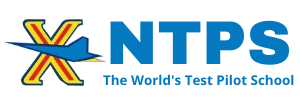T&E 4205 UAV Systems Test
Course Description
This course is offered once per year on-campus. The course is designed to address the unique testing requirements when evaluating a UAV system. It is assumed that the participants are generally knowledgeable in manned aircraft flight testing as this course builds on that knowledge. Course lectures will introduce the students to UAV-specific testing when compared to manned Fixed and Rotary Wing testing. Issues such as data latency, human factors, data link coverage, failure modes, contingency management, telemetry issues, guidance, navigation and control, mission planning, and sensor cueing/integration will be addressed. Flight Test Techniques for testing both Remotely Piloted and Command Directed (autonomous) Vehicle modes will also be covered.
Anticipated Course Learning Outcomes
Be familiar with:
- The techniques for UAV guidance, control, and limit protection flight test
- The techniques for UAV command and control link and sensor link ground/flight test
- Airworthiness Requirements (Civil and Military) for UAVs
- The requirements for assessing human factors of UAV Ground Control Stations (GCSs)
Understand:
- The fundamental differences in ground/flight testing of a UAV system versus a manned aircraft
- The primary modes for controlling a UAV, to include Remotely Piloted Vehicle (RPV) and Command Directed Vehicle (autonomous) operations
- The fundamentals behind UAV data link communications
- The concept of sense and avoid systems and their importance to UAV operations
- The techniques and data analysis for Unmanned Air Vehicle (UAV) systems ground/flight test
Know:
- The techniques for assessing human factors of UAV Ground Control Stations (GCS)
- The development of a structured test plan/cards for UAV systems ground/flight test
- The fundamentals of safety planning and risk mitigation for UAV systems ground/flight test
- The approach to safely and effectively executing a UAV systems flight test sortie
